
When Your Growing Dome Gives You Meyer Lemons, Make Lemonade!
Jump to: Growing Lemons, Best Location for Lemon Trees in a Dome, Planting Your Lemon Tree, Companion Plants, Lemon Tree Care, Managing Pests, Harvesting, Pruning, History and Trivia, Health Benefits of Lemons
Genus: Citrus x limon ‘Meyer’ Common Name: Meyer’s Lemon Type: Tree, shrub Height: 6-10 feet tall Width: 4-8 feet wide Zone: 8b-11b

Growing your own lemons in a Growing Dome Greenhouse offers the satisfaction of fresh, homegrown fruit. Lemons add a zesty touch to food and drinks. The Meyer lemon is a hybrid of lemon and mandarin orange and is native to China.
Growing Lemons
Growing Meyer lemon plants are somewhat cold tolerant. Other lemon varieties do not handle cold climates. All varities can be damaged by cold or frost if planted outside in cold climates. Lemon trees need good drainage and do not like saturated soil. Plant your lemon tree where the soil will drain well or in a pot and your dome will give you Meyer lemons!
Best Location in a Dome Greenhouse
- Warmth: Meyer lemons thrive best in a dome with temperatures between 50-80°F (10-27°C). Position your tree near the above-ground pond for optimal warmth.
- Sunlight: It’s best to aim for a minimum of 8 hours of sunlight daily. The center of the dome is usually the sunniest spot.
- Humidity haven: Meyer lemons prefer 50% humidity or above. Consider a misting system or pebble tray to increase humidity around the tree.
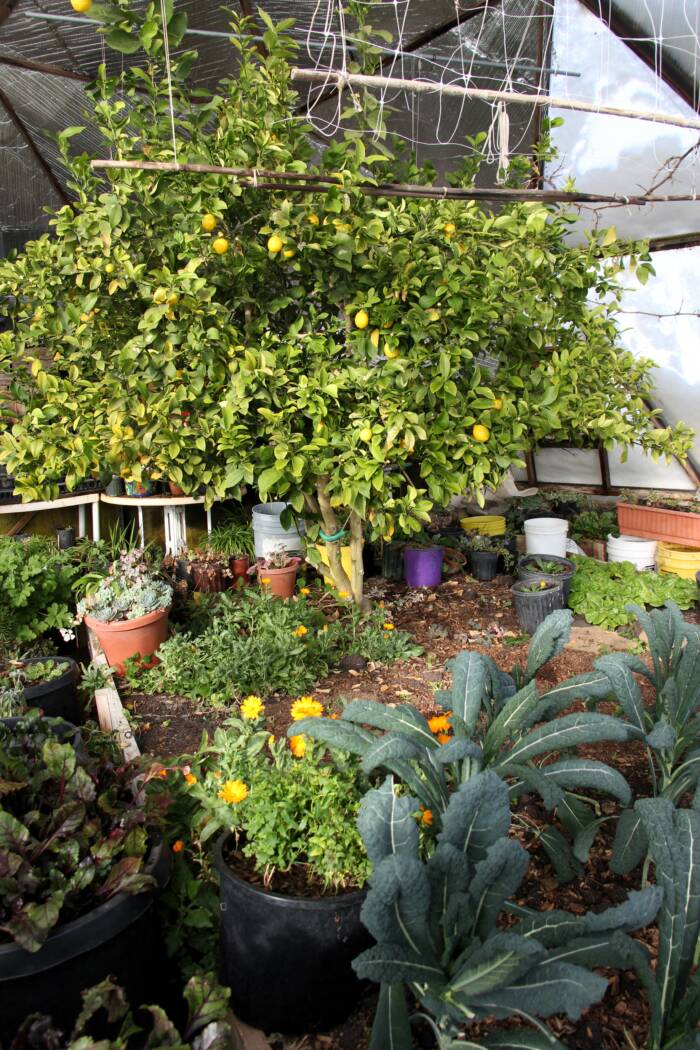
Planting Your Lemon Tree
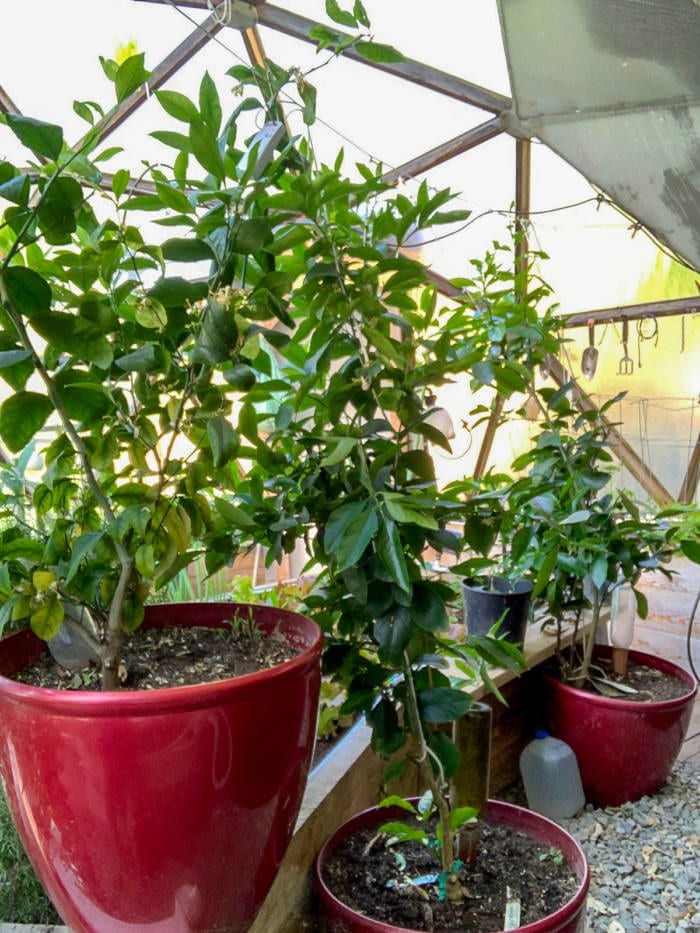
- Seed or sapling? If you live in a cold region and are not heating your dome, planting from seed might not be wise. Lemon seeds need warm temperatures and consistent moisture to germinate successfully. Colder temperatures may slow or prevent germination. A young tree from a nursery will bring faster results. Seedlings also tend to be less cold-hardy than mature trees and without a heated dome, young saplings might not survive the winter, even in relatively mild climates.
- Growing from seed: First soak the lemon seeds in water for 24 hours. Next plant the seeds in pots with well-draining soil. Keep the soil moist and warm, and provide grow lights for faster germination. Growing a lemon tree from seed is easy! Follow this link to learn how to grow a lemon from seed.
- Potted or planted? Pots offer portability for wintering lemon plants indoors. Planting lemon plants directly in the greenhouse soil allows for larger tree growth. Ensure good drainage with raised beds or well-amended soil.
Note: If you are growing a lemon tree from seed, it takes about three years for an indoor or greenhouse lemon tree to produce fruit. It takes about five years for an outdoor tree to produce fruit.
Growing Lemon Tree Companion Plants
Companion plants are the first line of defense against pests in your greenhouse. Planting an herb garden near your lemon tree is helpful. Herbs are useful in the kitchen and for medicinal purposes. Herbs can attract beneficial insects and deters pests. Other benefits are soil improvement, weed prevention, and visual appeal.
These plants are great companions for your lemon tree:
- Pest control: Basil, rosemary, cilantro, thyme, and yarrow attract beneficial insects and deter pests.
- Pollination: Flowering plants like yarrow, borage, calendula, lavender, and nasturtium attract pollinators. They are oftentimes edible or have medicinal properties.
- Aromatic symphony: Pelargoniums, often called scented geranium, jasmine, roses, mock orange bushes, and lemon verbena add delightful fragrances to your greenhouse.

Lemon Tree Care
How to care for lemon trees:
- Light: Lemon trees prefer a lot of sunlight, 8 hours per day is best.
- Water: Lemon trees prefer moist soil. One way to check is to put your finger in the soil up to the second knuckle. If the soil is moist, it’s not time to water. It’s important to avoid overwatering, which can harm your lemon tree. If you are growing a lemon tree in a container, let the top 2 inches of soil dry out before watering again. Once the soil in the pot feels dry, then water it until there is water running from the bottom of the pot.
- Soil and pH: Meyer lemons prefer slightly acidic, well-draining soil. Consider testing your soil and amending it if needed.
- Fertilizer: Lemon trees prefer high-nitrogen or all-purpose fertilizer. The recommendation is to apply the fertilizer three times during the growing season. Plus keeping your lemon tree healthy will help to deter pests. We like using the Down to Earth Organic Citrus Mix in our Growing Domes.
Managing Lemon Tree Pests
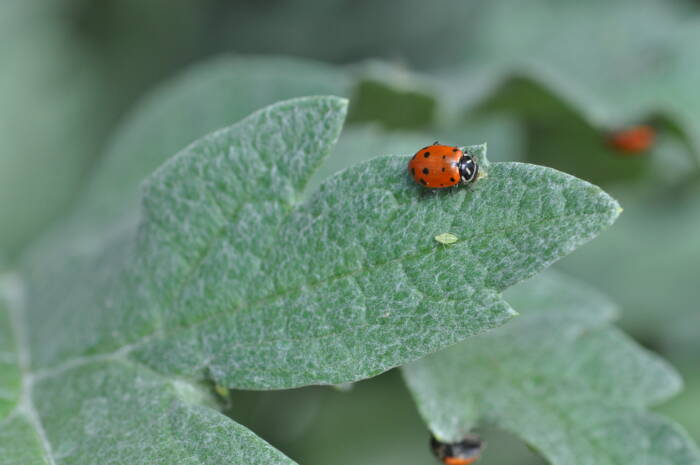
- Companion planting: The first line of defense! Companion plants deter pests and attract beneficial insects and pollinators.
- Beneficial insects: Ladybugs love aphids, mealybugs, mites, and whiteflies. Consider introducing them to your greenhouse.
- Organic options: Neem oil and insecticidal soaps are helpful. Remember not to use either option when bees and ladybugs are present.
- Physical removal: Scale insects can be wiped off with your fingers or sprayed with rubbing alcohol.
Harvesting Lemons
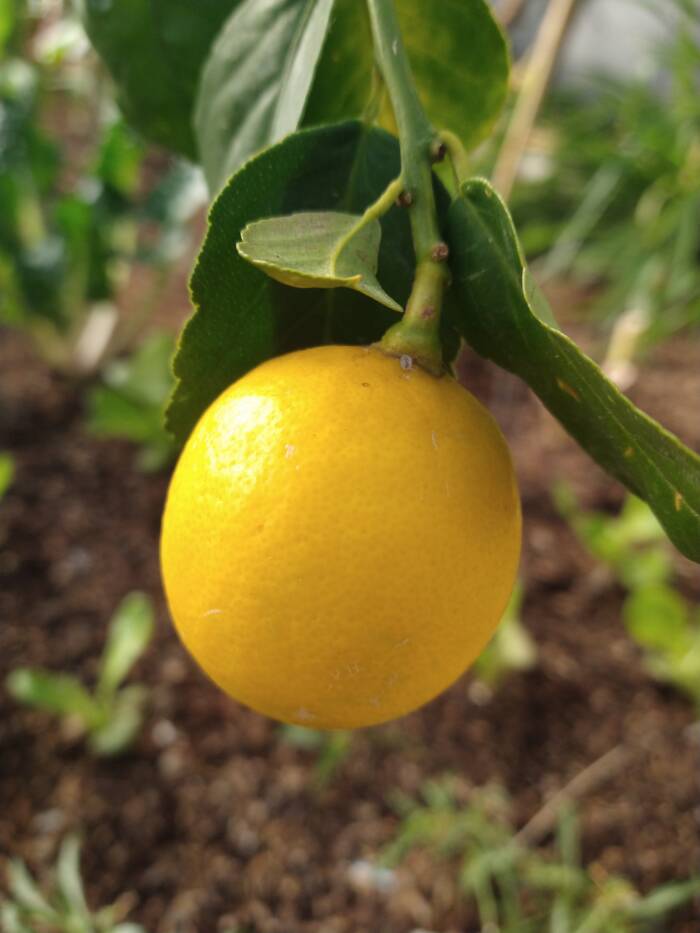
Lemons are slow growing and will require several months to grow from a small green lemon to fully ripe and ready to harvest.
- Ripe and ready! Look for bright yellow or yellow-green lemons with a glossy skin, about 2-3 inches in size.
- Meyer lemons are smaller, round rather than elongated and a deeper yellow with an orange tint when ripe.
- To pick a lemon, hold it in your hand and gently twist…the lemon, not the dance move! Well, you can “do the twist” if you want, but pick the lemon first!
- Some gardeners prefer to use clippers to harvest their lemons. Be sure to use clean clippers!
- Timing: Harvest after the majority of the fruit has matured, usually in winter.
Pruning Lemon Trees
The purpose of pruning your lemon tree is for increased air circulation, which helps prevent disease. Remove any dead or diseased branches immediately. Remove thin branches since they will not be strong enough to bear the weight of lemons.
- Prune your lemon tree in winter after the lemon harvest. The tree should be at 3-4 feet tall.
- Airflow and disease prevention: Focus on removing dead, diseased, or overcrowded branches to improve air circulation and prevent disease. After trimming diseased branches, clean your clippers before trimming other plants. Hydrogen peroxide is an easy and inexpensive method for cleaning clippers.
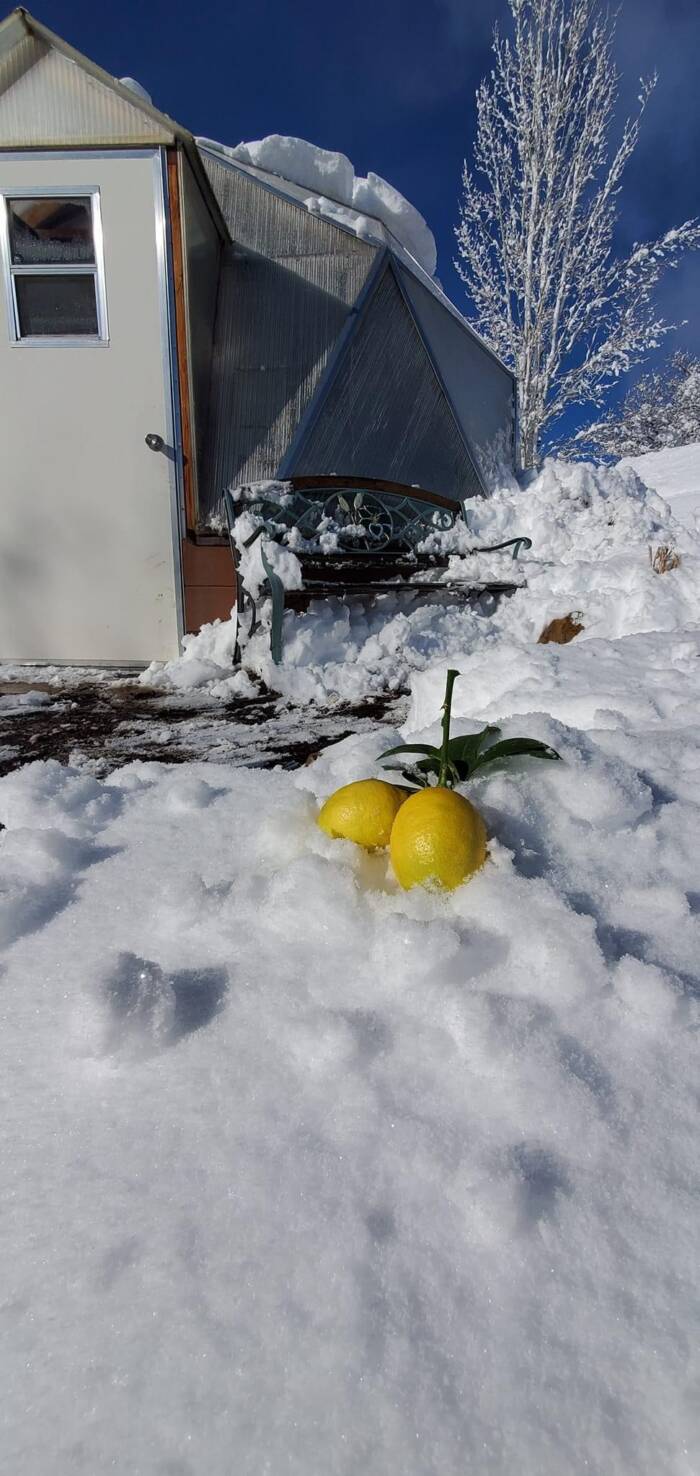
Lemon Tree History and Trivia
It is believed that lemon trees first originated in eastern India along the slopes of the Himalayan Mountains. Molecular research shows that lemons came from crossing citron and sour orange.
- Lemons originated in ancient India 25 million years ago!
- The first place in America to grow lemons was Florida in the 1500s.
- Frank Meyer introduced what is now called the Meyer lemon to the US after he found the plant near Peking, China in 1908.
A little lemon trivia!
- Lemons can produce up to 600 pounds of lemons per season!
- Citrus fruits are technically berries with a tough, bitter skin.
- Lemons have many uses beyond culinary, from cleaning to healing bruises.
- The Meyer lemon was just a pretty houseplant until Martha Stewart started sharing delicious recipes. Try our Lemon Olive Oil Cake with Lavender Glaze recipe! Yum!
Health Benefits of Growing Lemons
- Lemons are rich in vitamin C and antibacterial properties.
- They aide in digestion, hydration, and prevent oxidation.
- Another benefit of lemons is they help to lower blood pressure and can prevent kidney stones. Lemons are full of nutrients that may help in support of your cardiovascular system help prevent kidney stones and anemia.
- Lemon peel, rich in hesperidin, boasts antibacterial, antimicrobial, anti-inflammatory, and anticarcinogenic properties. Add some zest to your salad with some lemon peel!
The zest is yet to come! The outermost layer of a lemon peel is known as the flavedo. This is referred to as lemon zest. This layer is full of natural oils with a concentrated burst of lemon flavor and aroma.
Ready to squeeze the day with homegrown lemons? This guide provides a comprehensive roadmap to success. Follow these tips, nurture your lemon or Meyer lemon tree with care, and soon you’ll be enjoying the juicy rewards of your greenhouse efforts. Remember, carpe lemon – squeeze the day with the zest of fresh, homegrown citrus!
